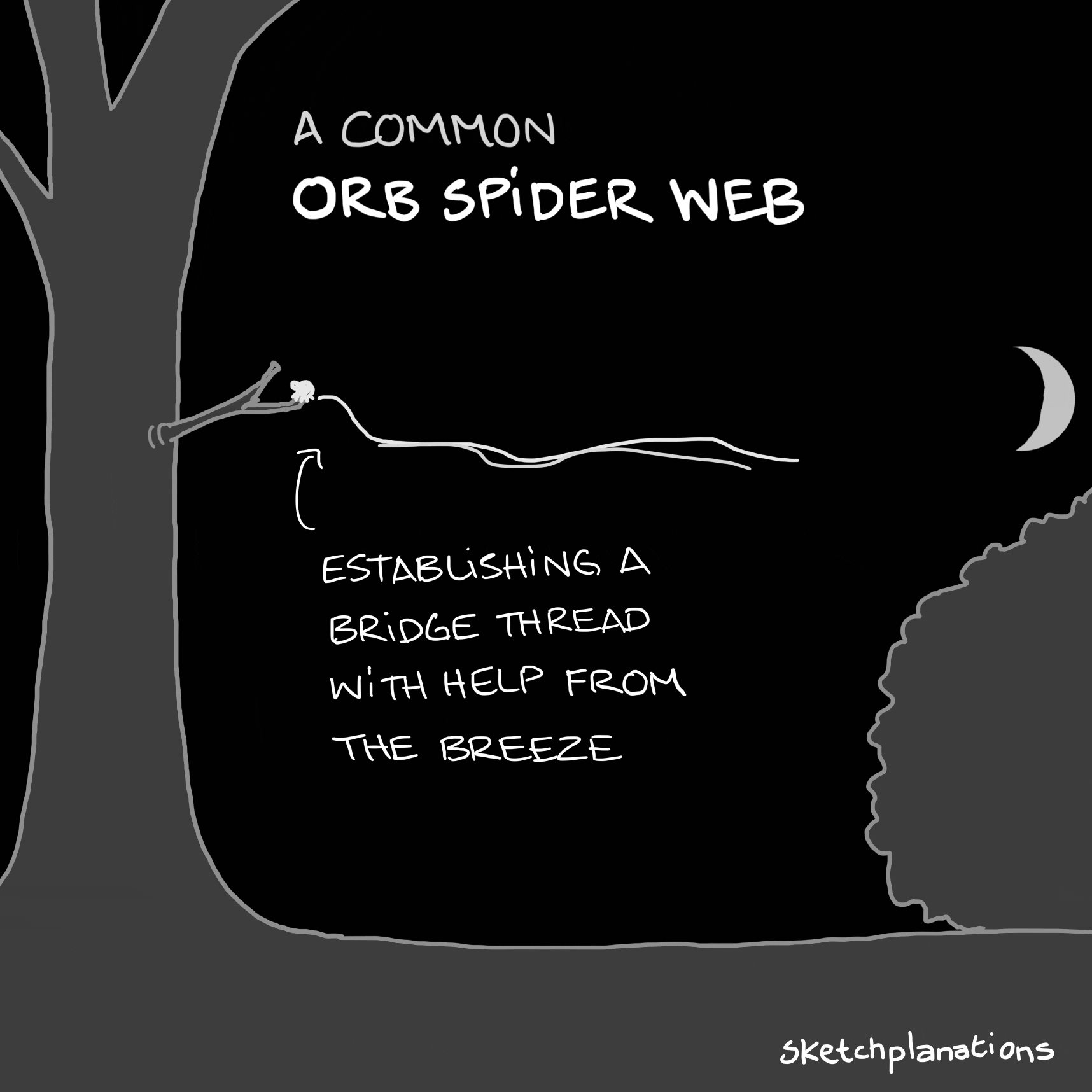A common orb spider web

- Prints
- Copied!
👇 Get new sketches each week
I've always been fascinated by how a tiny spider can create a web spanning a gap where climbing and dragging a thread across the floor would be impossible, maybe between trees, from a building to a lamppost, or over a stream. How do they do that? Here's a common technique by many orb weaver spiders — known for building orb-shaped, or circular wheel-shaped webs — for bridging the gap and creating the web.
The spider stands on the edge and lets out a long thread. It waits for the breeze to blow the thread away from them. If the thread catches onto something it can form a bridge thread.
Once it catches, the spider may reinforce the thread and then put down other anchors. These then form the frame of the web into which it will add radial threads from the centre.
The spider may then put down an auxiliary thread that provides a non-sticky frame, together with the radial threads, for it to walk on while it lays down the final sticky capture spiral. It's then set to lie in wait.
Some spiders will eat their webs at the end of the night but leave a bridge thread in place — perhaps for you to walk into in the morning — ready to rebuild the next night.
There is a vast diversity of spiders and webs. This is a fairly common example, but even within orb spider webs, there are a ton of different strategies for capturing prey. But perhaps, the next time you spot a bridge thread spanning a seemingly impossible gap this will give you a thought as to how it might have been done.
Here's a common orb spider web as a static sketch
You can watch darwin's bark spider on the BBC creating a web spanning a remarkable 25 metres

